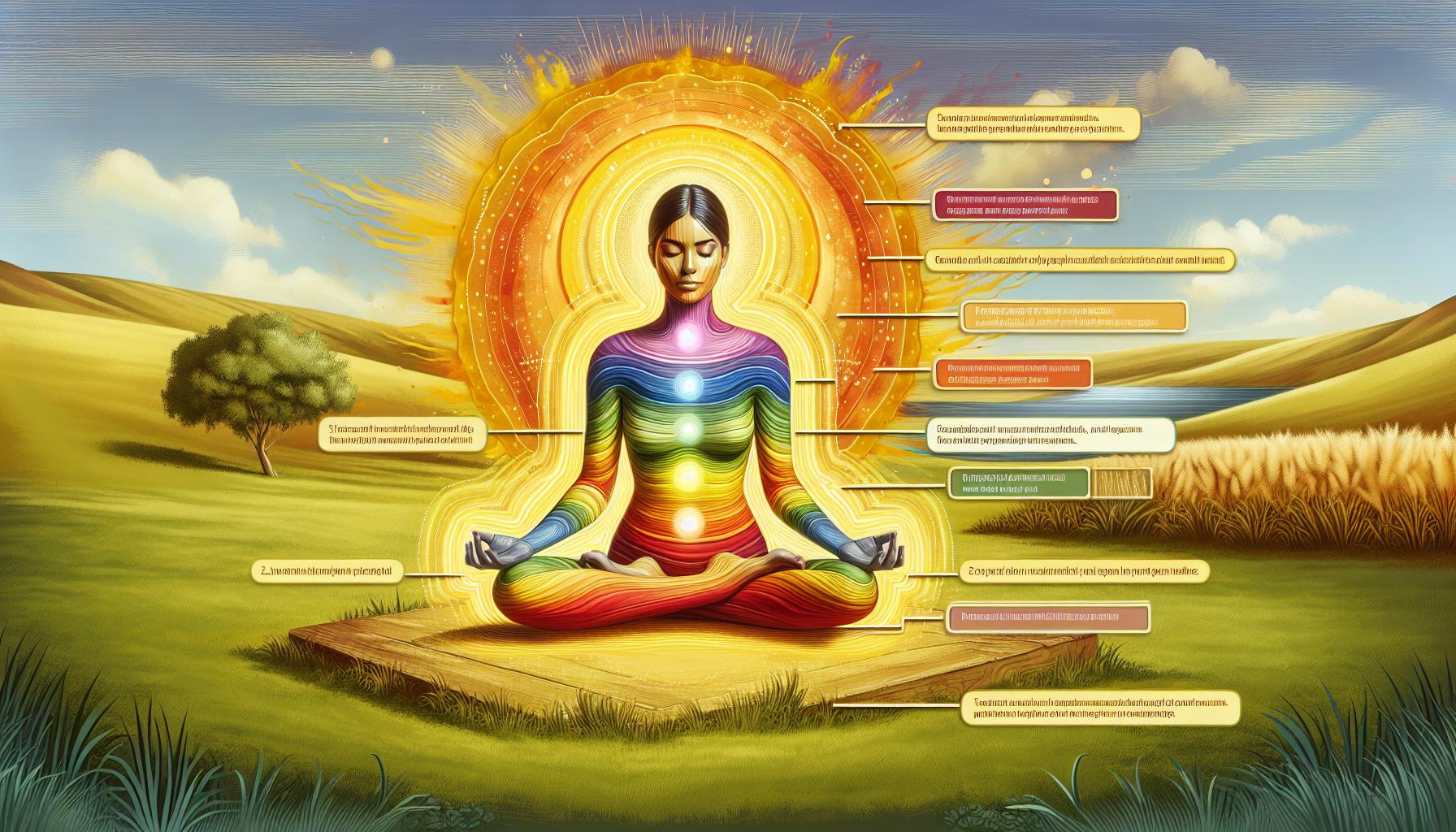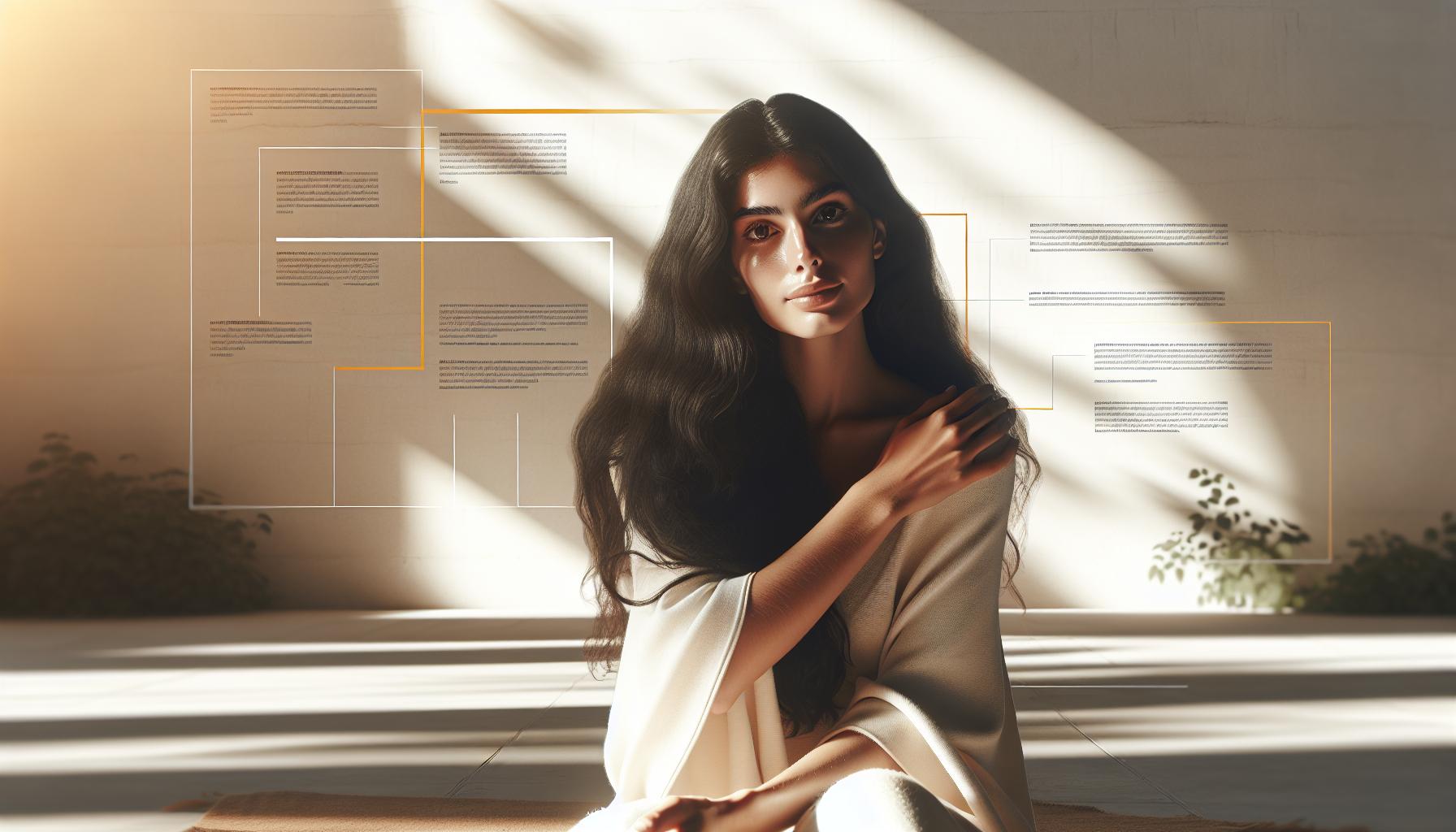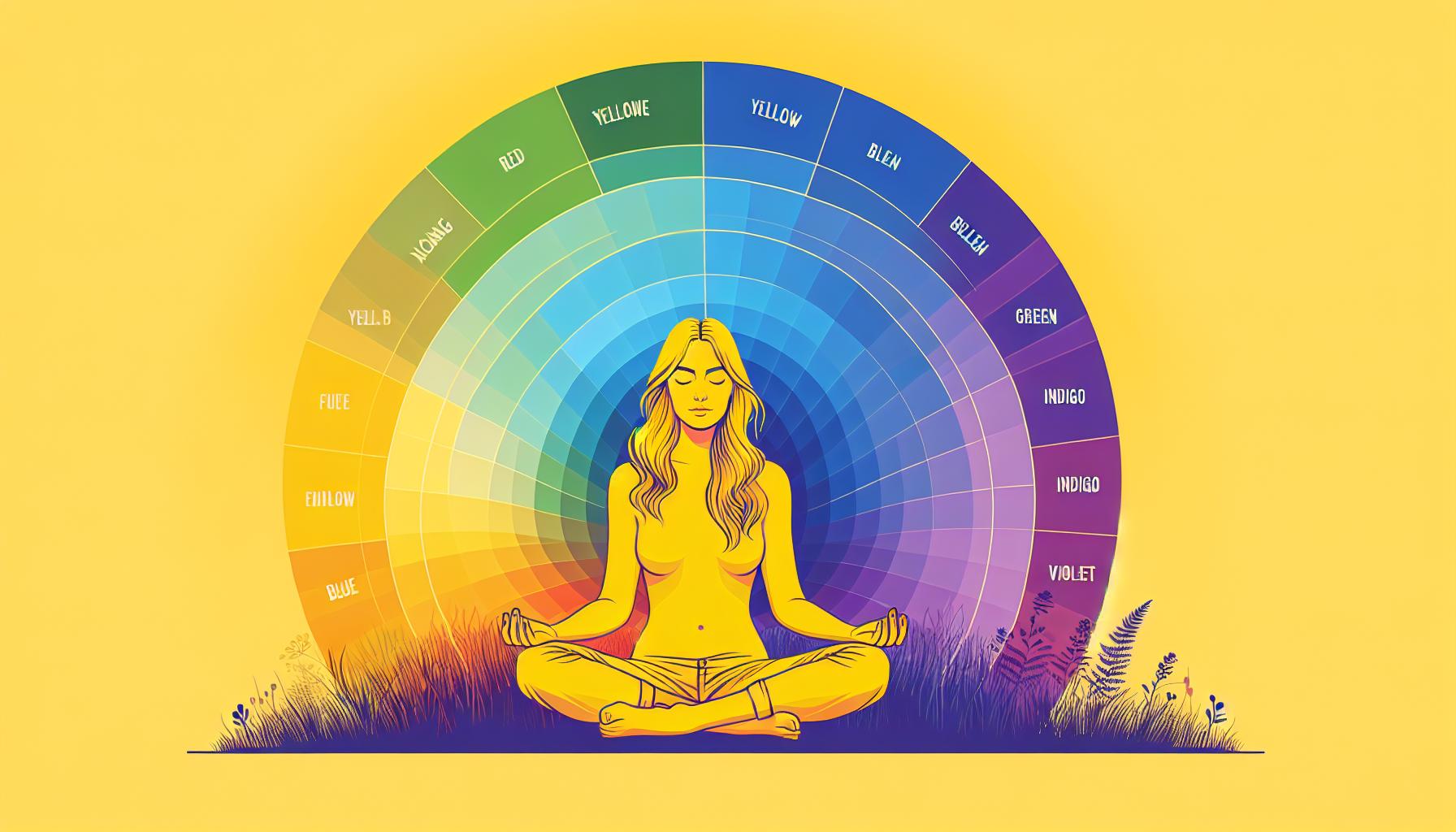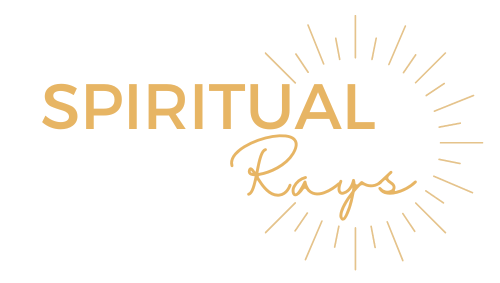What Are Auras? Explore Their Meaning and Significance
Ever wondered what those colorful glows around people might mean? Auras are fascinating energy fields that surround us, reflecting our emotions and overall well-being. Whether you’re a beauty enthusiast or just curious about the metaphysical, understanding auras can add a new layer to your self-awareness and interactions.
What Are Auras?
Auras are fascinating, colorful energy fields that surround all living things. They often reflect your emotions, physical health, and spiritual state. By understanding auras, you can tap into deeper levels of self-awareness and enhance your interactions with others.
Definition and Overview
An aura is more than just a pretty glow. It’s a color-specific energy field that radiates a few inches to a few feet around your body. Think of it like a personal energy signature, influenced by your thoughts, feelings, and experiences. Auras can appear in various colors, each carrying unique meanings. For instance, a vibrant red might suggest passion or anger, while calming blue could indicate serenity. By tuning into these colors, you can better understand your emotional world and even connect with the feelings of those around you.
Are Auras Scientifically Backed?
The science behind auras is still a hot topic. While many studies attempt to validate their existence, they often face challenges. Research indicates that people can’t consistently see auras, especially in controlled environments like complete darkness. In some experiments, physical cues—like body heat—might mislead people into thinking they’ve spotted an aura.
Yet, that doesn’t mean auras lack value. Ancient cultures have acknowledged them for centuries, suggesting there’s more to explore. As research progresses, the scientific community may one day provide a clearer picture of these elusive energy fields. Until then, your personal journey with auras remains an intriguing blend of both science and spirituality. Whether you perceive them or not, engaging with the idea of auras can deepen your understanding of yourself and those around you.
The Seven Layers of the Aura

Understanding the layers of your aura adds depth to your self-awareness journey. Each layer corresponds to a different aspect of your being, providing insights into your thoughts, emotions, and energy. Let’s explore these seven layers together.
Physical Aura Layer
The physical aura layer, often referred to as the etheric layer, sits closest to your body. Think of it as your personal shield that reflects your physical health. You might feel this energy as a warm sensation or see it as a vibrant red hue, especially if you’re energized or feeling great. Pay attention to how ailments can dull this layer, indicating areas that might need care. Embracing practices like yoga or meditation can strengthen and protect this layer, enhancing your overall well-being.
Emotional Aura Layer
Just beneath the surface, the emotional aura layer shines in captivating colors like amber or orange. It’s where you feel, process, and express your emotions. When you’re happy and vibrant, this layer radiates warmth; under stress, it can appear muddled or dark. Connecting with your emotional aura involves embracing your feelings—journaling, art, or simply chatting it out with friends can help clarify and uplift this layer. Listening to your emotional aura can guide you in choosing relationships that spark joy.
Mental Aura Layer
Step further into the spectrum with the mental aura layer. This layer, often painted in shades of yellow, holds your thoughts and ideas. It speaks volumes about your intellect and clarity of mind. When this layer feels bright and clear, you’re likely experiencing creativity and insight. But when it feels cluttered? That’s a sign to declutter your thoughts. Mindfulness and mental exercises can clear this layer, helping you digest information and make decisions confidently.
Astral Body Aura Layer
The astral body aura layer, also known as the heart chakra, glows with green energy, enveloping your heart and spirit. This layer connects you to others, reflecting your capacity for love, empathy, and compassion. When this layer is open, you feel deeply connected to the world around you, but closure or negativity can make it feel heavy or blocked. To nurture this layer, engage in acts of kindness, practice gratitude, or even take a moment to breathe deeply while sending love to yourself and others.
Etheric Aura Layer
Often confused with the physical aura layer, the etheric aura layer extends beyond but still relates to your physical well-being. It serves as a bridge connecting your body’s energy and the external world. When it’s strong, you radiate confidence and vitality; when weak, you might feel drained. Supporting this layer can involve surrounding yourself with positive people, engaging in activities that uplift you, or simply stepping outdoors to connect with nature.
Celestial Aura Layer
Next, we enter the celestial aura layer, often visualized in tranquil blues or deep indigos. This layer represents your intuition and spiritual awareness. It’s that gut feeling you get about people or situations. Tuning into this layer means embracing your instincts and exploring your spiritual beliefs. Practices like meditation or spending time in nature can enhance your connection to this layer, allowing you to trust your intuition and understand your deeper self.
Causal Aura Layer
Finally, the causal aura layer, shimmering in whites or silvers, reflects your divine connection and higher consciousness. It’s the layer that ties you back to your purpose and the universe. When you’re aligned with this layer, you feel a sense of peace and purpose. Aligning with this layer can involve spiritual practices, like gratitude or deep reflection on your life’s goals. Embracing this connection may empower you to manifest your dreams and navigate life with confidence.
How to See Your Aura

Curious about your aura? Getting started is all about tuning in and embracing the moment. Seeing your aura can be a revealing experience, offering insights into your energy and emotional state. Let’s jump into the steps that’ll help you connect with this colorful emanation surrounding you.
Preparation Steps
- Choose Your Space
Find a calm and quiet spot where you can focus without distractions. This could be your cozy bedroom, a sunny corner in your living room, or a peaceful outdoor setting. Comfort is key. - Set the Mood
Dim the lights a little, or even light some candles if you fancy. Soft lighting helps your eyes adjust, making it easier to spot any colors around your body. - Center Yourself
Take a few moments to breathe deeply. Inhale through your nose, hold it for a second, and exhale slowly through your mouth. This practice helps clear your mind and ground you. - Relax Your Mind
Let go of any stress or worries. Think about something that makes you happy or at peace. Gratitude always helps elevate your energy!
- Stand or Sit in Front of a Plain Background
Position yourself in front of a blank wall. White, gray, or a light color works best. Your aura’s colors will pop against a neutral backdrop. - Focus on Yourself
Gaze softly at the area around your head and shoulders. Don’t strain your eyes. Let your focus be gentle and relaxed, almost like daydreaming. - Notice Changes
Be patient and watch for any movements or distortions in the air surrounding you. Auras often appear as a soft glow or shimmer—sometimes even colors may become visible against the wall. - Pay Attention to Colors
If you see different colors, keep a mental note. Each shade carries meaning. For instance, yellow symbolizes clarity and joy, while green embodies healing and harmony. - Document Your Experience
Grab a journal and jot down what you noticed. Write about the colors you saw, how they made you feel, and any thoughts that crossed your mind. This reflection can deepen your connection to your aura over time. - Practice Regularly
Aura seeing is a skill that improves with practice. Make it a part of your self-care routine, and enjoy the beautiful journey of discovery and self-awareness.
Aura Colors and Their Meanings

Understanding your aura colors opens up a vibrant world of self-discovery. Each color reflects different aspects of your personality, emotions, and even your health. Curious about what those colors mean? Let’s immerse!
Common Aura Colors
Here’s a quick breakdown of the most common aura colors and what they indicate:
- Red: Passionate and energetic, red signifies strength and a strong will. If you feel grounded and vibrant, your aura could be shining bright red. But, if you’re feeling anxious, that red might take on a muddy hue.
- Orange: This color embodies adventure and creativity. An orange aura indicates thoughtfulness and consideration for others. If you find yourself often exploring new experiences or supporting your friends, orange might just be your color!
- Yellow: Associated with creativity and friendliness, a yellow aura reflects optimism and relaxed energy. If you radiate positivity and creativity, yellow shines through your aura.
- Green: Social and nurturing, a green aura reveals your ability to communicate and connect. You might feel drawn to helping others or fostering relationships.
- Blue: Calm and intuitive, blue represents spiritual awareness and free-thinking. If you tend to reflect deeply or find peace in solitude, your aura may be a serene blue.
- Indigo: Curious and spiritually connected, indigo indicates a gentle energy. If your intuition often guides you, this color could signify your deeper spiritual connections.
- Violet: Wise and intellectual, a violet aura suggests independence. If you often investigate into philosophical thoughts or inspire others with your insights, violet might be your dominant shade.
Interpretation of Colors
Each aura color interacts uniquely with your current state. For instance, if your aura’s predominately blue today, you may be feeling peaceful and reflective. If tomorrow it’s shifting to vibrant orange, you might naturally find yourself in a more creative or adventurous mindset.
Remember, your aura is not static. It changes with your experiences, moods, and even health. For example, someone going through a tough time might notice a duller color, indicating stress or discomfort. On the flip side, when you’re feeling great—bright colors often surface, showcasing your inner joy and energy.
Knowing your aura colors empowers you to embrace who you are and how you feel. You get to choose how to express the various hues of your personality. When you dress, wear accessories, or even decorate your space, consider incorporating colors that resonate with your aura. Surrounding yourself with your preferred hues not only boosts your vibe but serves as a continuous reminder of your inner strength and beauty.
Aura Projection Techniques
Understanding how to project your aura can enhance your interactions and self-awareness. These techniques are simple but effective, allowing you to connect with your own energy and that of others in a positive way.
Method One: Color Focus
Color plays a crucial role in your aura’s energy. By focusing on specific colors, you can amplify the qualities associated with them. For example, if you want to project calmness and tranquility, think about the soothing hue of blue. Visualize a blue light surrounding you, radiating outwards and inviting peaceful energy. Alternatively, if you seek strength and confidence, channel the fiery red energy. Envision the red glow surrounding you, empowering you with passion and determination. Focusing on the color that resonates with your intentions can transform your energy and elevate your aura.
Method Two: Aura Protection
Protecting your aura is essential, especially in hectic or challenging environments. It’s like putting on an energetic shield that keeps you balanced and secure. Try envisioning the outer edge of your aura as tough and resilient, much like an eggshell. This mental image allows you to create a barrier that guards you against unwanted influences. Another visualization technique is imagining your aura covered in dark, inky blue paint, effectively camouflaging it. This method can be especially helpful after engaging in energy work, ensuring that only positive vibrations reach you. Incorporating protective visualizations can help you navigate crowded spaces or emotionally intense situations without feeling overwhelmed.
Method Three: Helping Others with Your Aura
Sharing your vibrant energy can uplift those around you. If someone’s feeling low, and you’ve got a strong aura, you can send them some of your excess energy. Start by visualizing that person enveloped in a warm, loving glow. This visualization not only strengthens their aura but also fosters a genuine connection between you. Maintain awareness of your own energy levels; it’s crucial to ensure you’re not giving more than you receive. If you frequently feel drained, focus on nurturing your aura before helping others. Empowering others through your aura can create ripples of positivity and compassion in your community.
By exploring these projection techniques, you establish a deeper relationship with your aura. Embrace your unique energy and allow it to shine brightly in the world.
Conclusion
Exploring auras opens up a whole new world of self-discovery and personal growth. By understanding the colors and layers of your aura you can tap into your emotions and enhance your interactions with others. It’s all about embracing who you are and allowing your unique energy to shine through.
As you practice seeing and nurturing your aura you’ll find that it not only boosts your self-awareness but also enriches your life. So go ahead and jump into this colorful journey. Your aura is waiting to be explored and celebrated.
